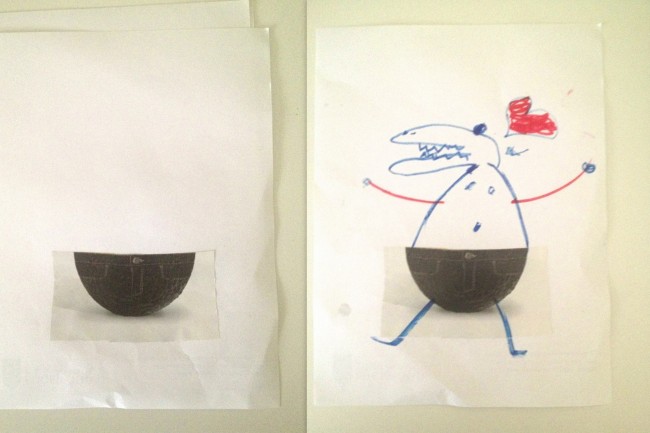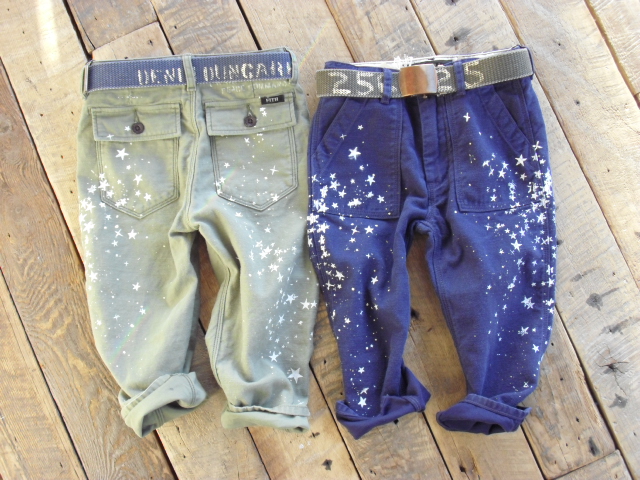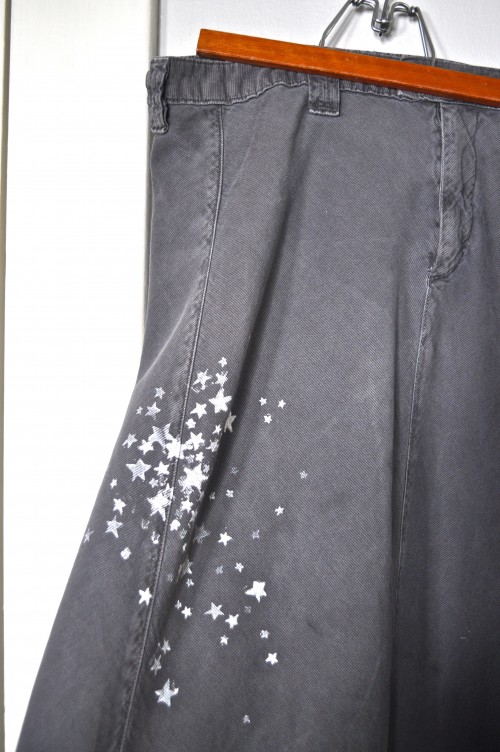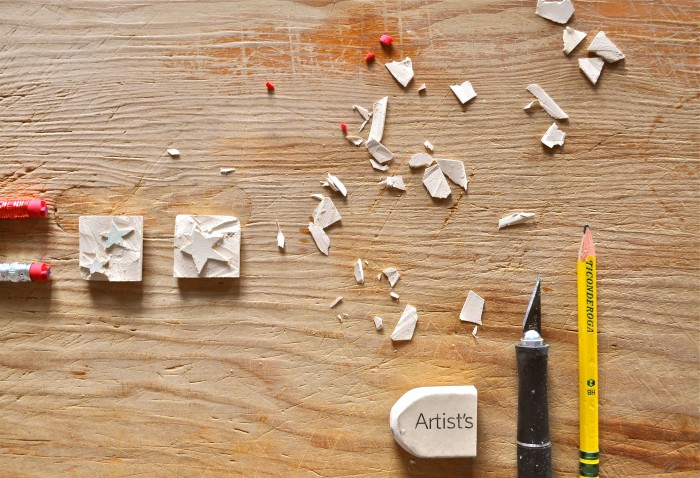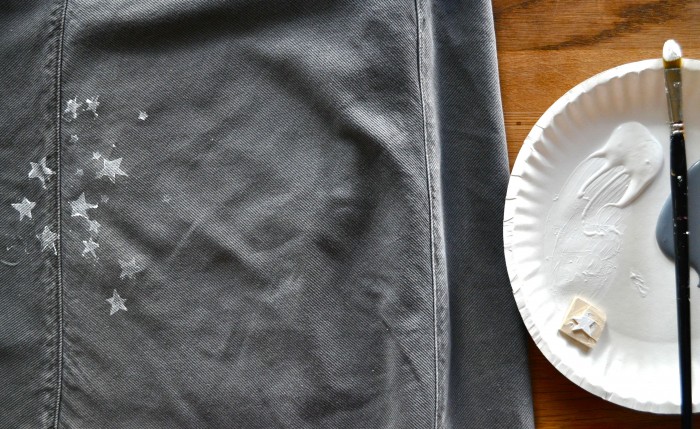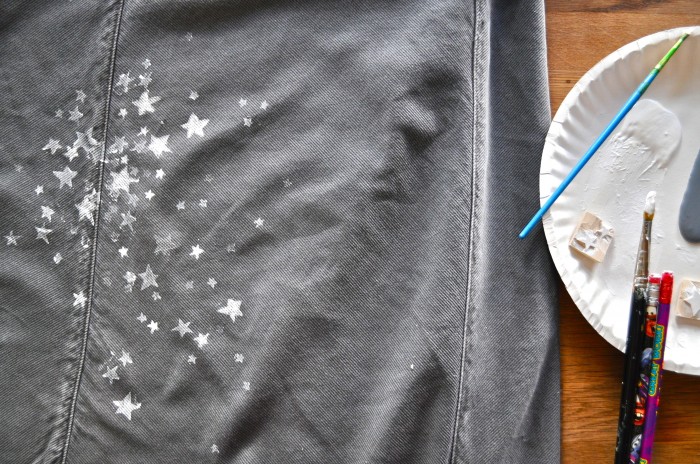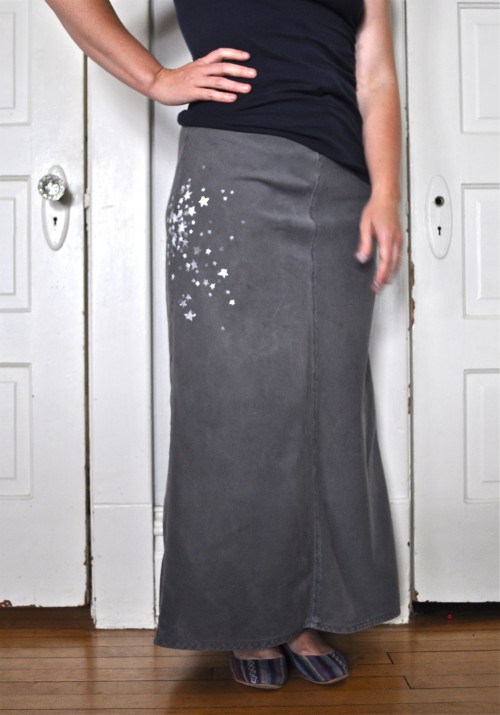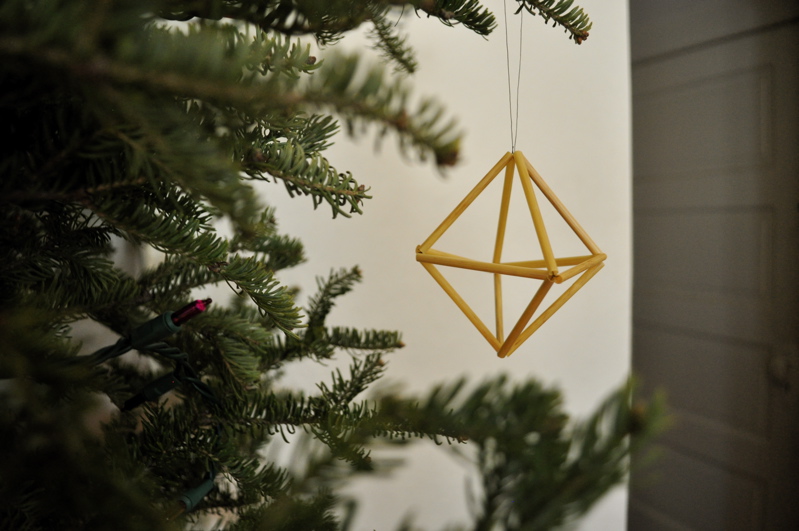
a lovely geometric straw ornament
This is a traditional eastern european ornament and garland. The shape is simple, but a little tricky the first time you make it. After you get the hang of it many three dimensional geometric shapes are possible. I think it makes for a nice modern, but still natural christmas ornament. Like the other tutorial I used straw for, this one can of course can be made with plastic or paper straws, but if you would like to use natural straws, I found mine the at the imagination childhood online shop.

materials
- natural straw
- button thread (or other strong thread)
- yarn needle
directions
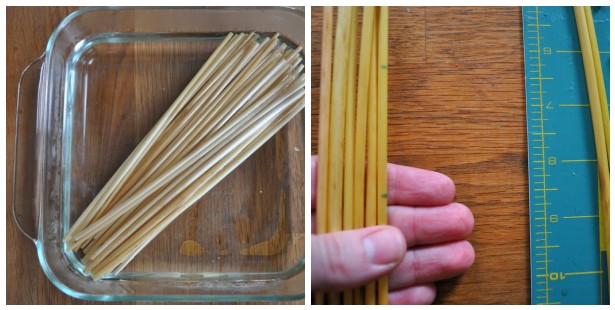
First you need to soak the straws and cut them into 2inch pieces. I explained this in detail in my tutorial for a straw and pompom garland.
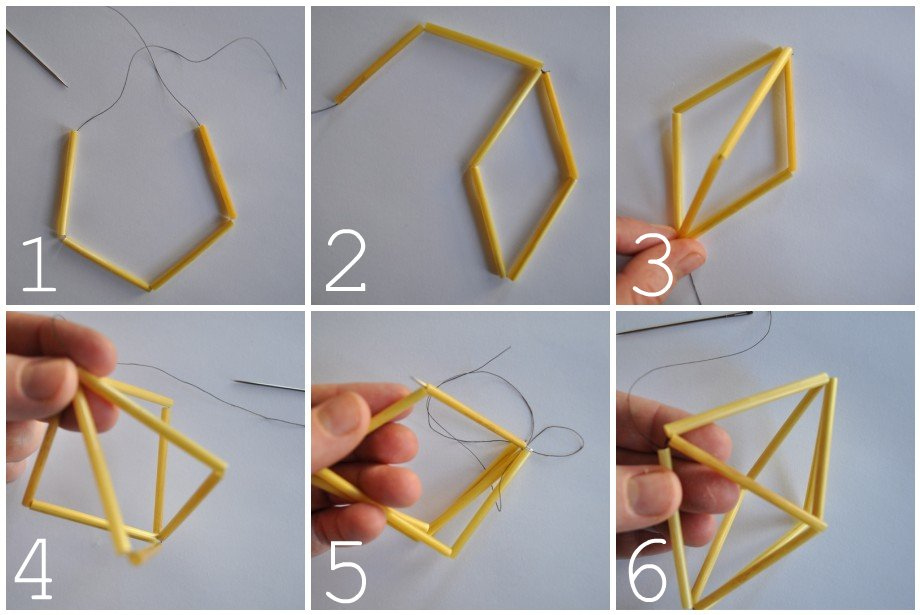
1.Take a piece of thread about twice the length of your arm and thread the yarn needle–no need to knot it. String four straw pieces almost to the end of your thread. Pull the threads until the straws meet, but don’t pull too hard or you will split the straws. Then tie a square knot (that’s the plain old kind). You can trim the end, but don’t cut the working thread.
2. Now pull the thread through two straw pieces and
3. secure them at the opposite end.
4. Thread two more pieces and tie at the top (the opposite end you just strung them from)
5. Take your needle back through one of the straws, so it comes out in the middle.
6. String one straw at a time securing it where the next straws meet. Do this four times and tie a knot.
Trim all your threads and decide which way you would like it to hang. Loop your thread at the top point and tie it together. Now hang up that nice looking ornament you just made.

You can keep going and make a double ornament, or keep going and going and make a whole garland! If you do, I would suggest making them one at a time and then tying them all together. Making these with a long piece of thread doesn’t really work: it gets tangled and it’s bothersome.
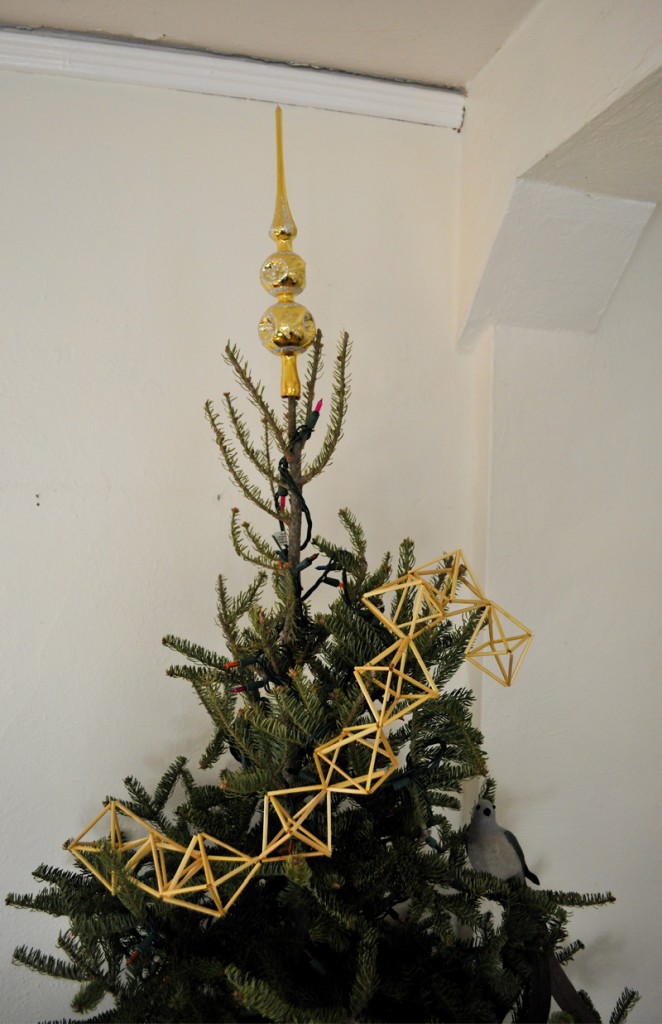
a christmas present for my lovely readers: a week of handmade ornament tutorials!
I will be accepting advertisers on Elsie Marley starting January 2011. If you would like to reserve a spot please email me and we can discuss the specifics! Thanks! elsiemarleyblog@gmail.com
